Google Pixel 8 vs. Samsung Galaxy S23: A fairer fight
The Google Pixel 8 steps it up this time.

The Pixel 8 is Google's latest flagship phone, featuring an upgraded 120Hz Actua display, powerful Tensor G3 chipset, and plenty of fun AI features that make it easy to edit your photos on the fly. And with seven years of software and hardware support, you can keep using the Pixel 8 for a long time before upgrading.
Pros
- New 120Hz OLED display
- Google has great computational photography
- Seven years of software support
- Larger battery
- Impressive AI features
- Cheaper
Cons
- Still no manual photo controls
- Only two rear cameras
- Better colors limited to Pro model
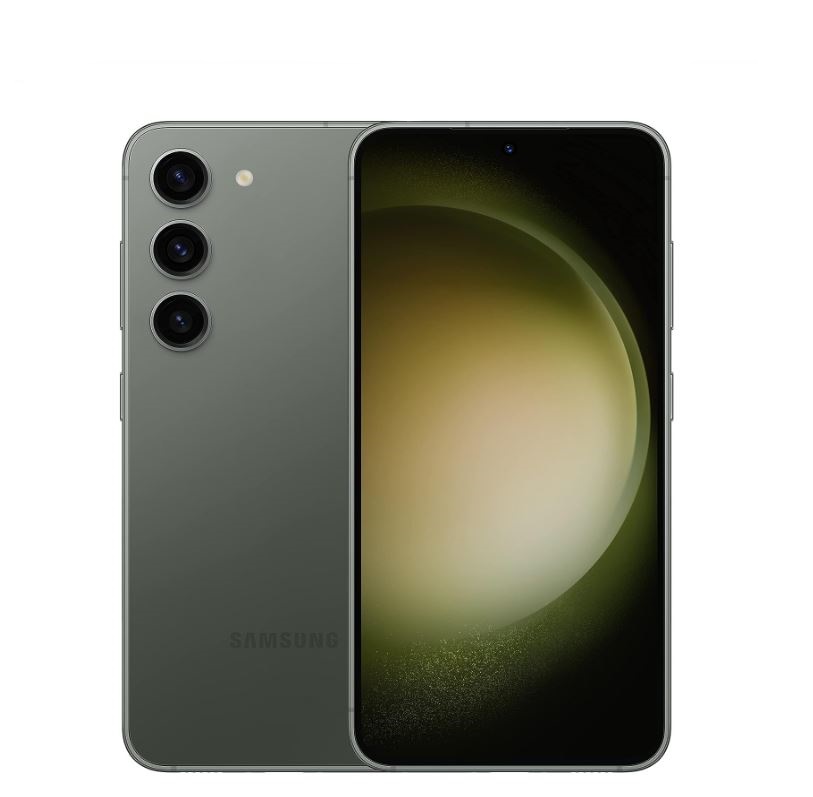
The Galaxy S23 is Samsung's smallest flagship, but size is just part of the picture because it features a powerful Snapdragon chip that runs circles around other Android phones. Plus, the triple camera setup gives you the versatility of getting the full picture with the ultrawide camera or getting up close with the telephoto lens.
Pros
- Fantastic 120Hz AMOLED display
- Versatile triple camera setup
- More available color options
- Powerful Snapdragon chip
Cons
- Launched with Android 13
- Shorter software support
- More expensive
- Less appealing design
Google has finally launched the new Pixel 8, outfitting it with more than a few welcome upgrades to make it a much more worthy competitor among 2023 and 2024 Android phones. It comes with a better display, a bigger battery, and a new chipset that promises better performance and efficiency. Overall, it's not a bad package, especially considering all that you get, even at the inflated price tag. But is that enough to go up against its biggest competitor, the Galaxy S23?
Samsung's smallest flagship for 2023 also proved to be quite a worthy upgrade when compared to its predecessor, which is mostly thanks to the new chipset and larger battery. While not the smallest flagship around, it remains one of the best Android phones you can buy at this size. Although now, the Pixel 8 has shrunk down to nearly match the screen size of the Galaxy S23, moving in on its territory. After all, both phones are the base models of their respective flagship lineups.
So, does the newer Pixel 8 stand up to the powerful S23, or does it fall short?
Google Pixel 8 vs. Samsung Galaxy S23: Design
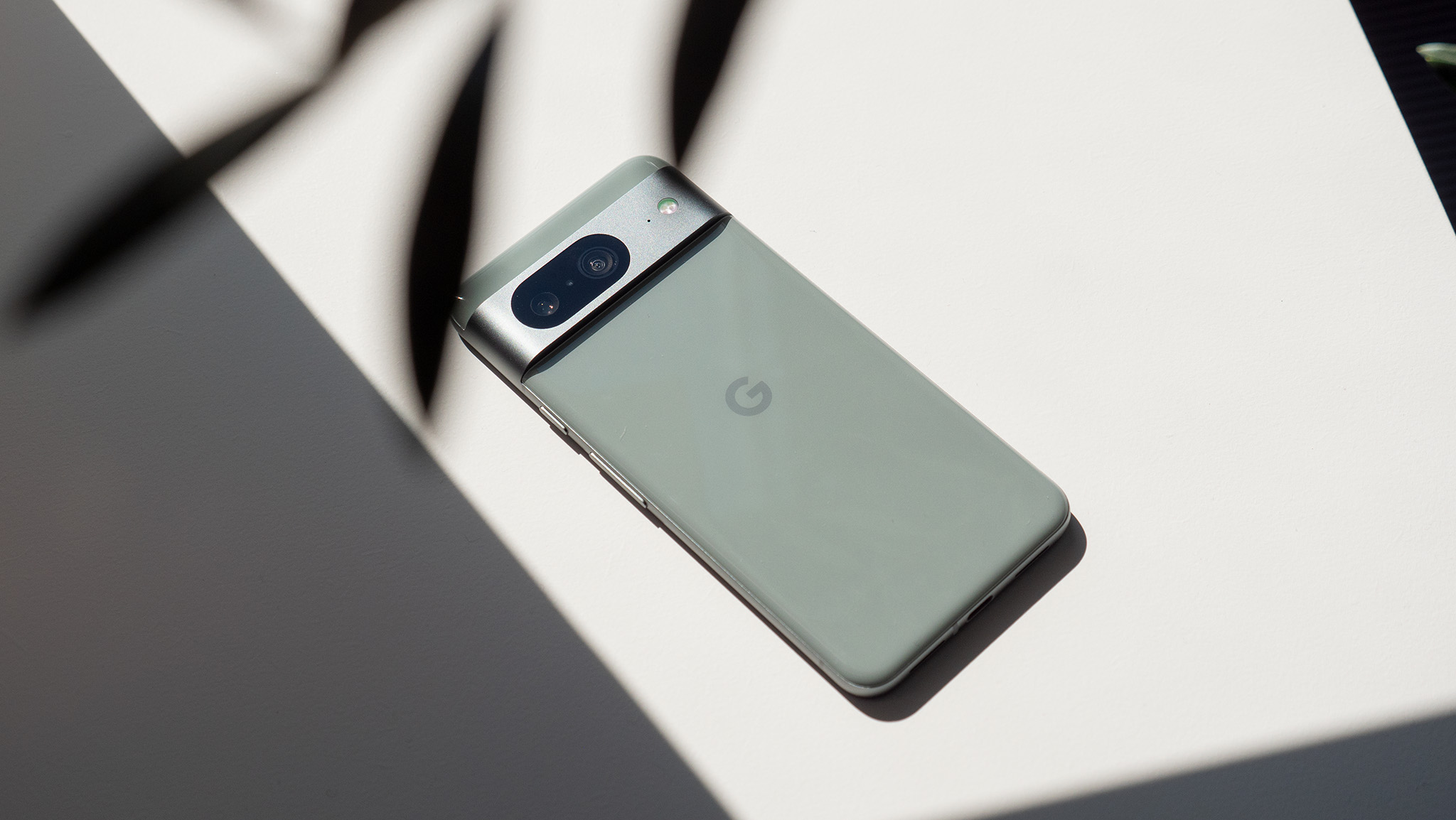
Compared to their predecessors, the Google Pixel 8 did not change its design as much as the Galaxy S23 did. In fact, it mostly retains the design Google has adopted since the Pixel 6. That's not really a bad thing since the Pixel design is pretty iconic, thanks to the unique camera bar on the back. It's immediately recognizable, and the Pixel 8 does little to change that.
What does change is the phone's overall silhouette. The corners are much more rounded than before, which gives the Pixel 8 a rather interesting look, one that almost reflects its Material You design language. It also makes the phone appear a bit smaller than it is, particularly thanks to the curved aluminum frame and slight curve to the glossy rear glass.
This is in stark contrast to the Samsung Galaxy S23, which is much more squared off with flat glass on both sides of a mostly flat aluminum frame. However, instead of a glossy finish, the rear glass panel has a soft matte finish. There's also no camera bar, and instead of an entire camera housing encasing all three sensors, each camera individually protrudes from the rear panel. It's a simple design, one that seems more content with blending in than standing out.


The displays are nearly the same size, at 6.1 inches for the S23 and 6.17 inches for the Pixel 8. The bezels around the display are also pretty minimal, which represents quite an improvement for the Pixel over its predecessor. The overall dimensions reveal that the Pixel 8 is thicker and taller than the S23, but the curvy design should make it more comfortable to hold.
Get the latest news from Android Central, your trusted companion in the world of Android
Google sticks to just three color options for the Pixel 8, including Hazel, Obsidian, and Rose. We would've liked it if Google also brought the Pixel 8 Pro colors to the smaller Pixel 8, but you can't have it all, I guess. The Galaxy S23 has four main colors and a few additional Samsung exclusive options, giving consumers more of a selection of colors to choose from.
Google Pixel 8 vs. Samsung Galaxy S23: Specs
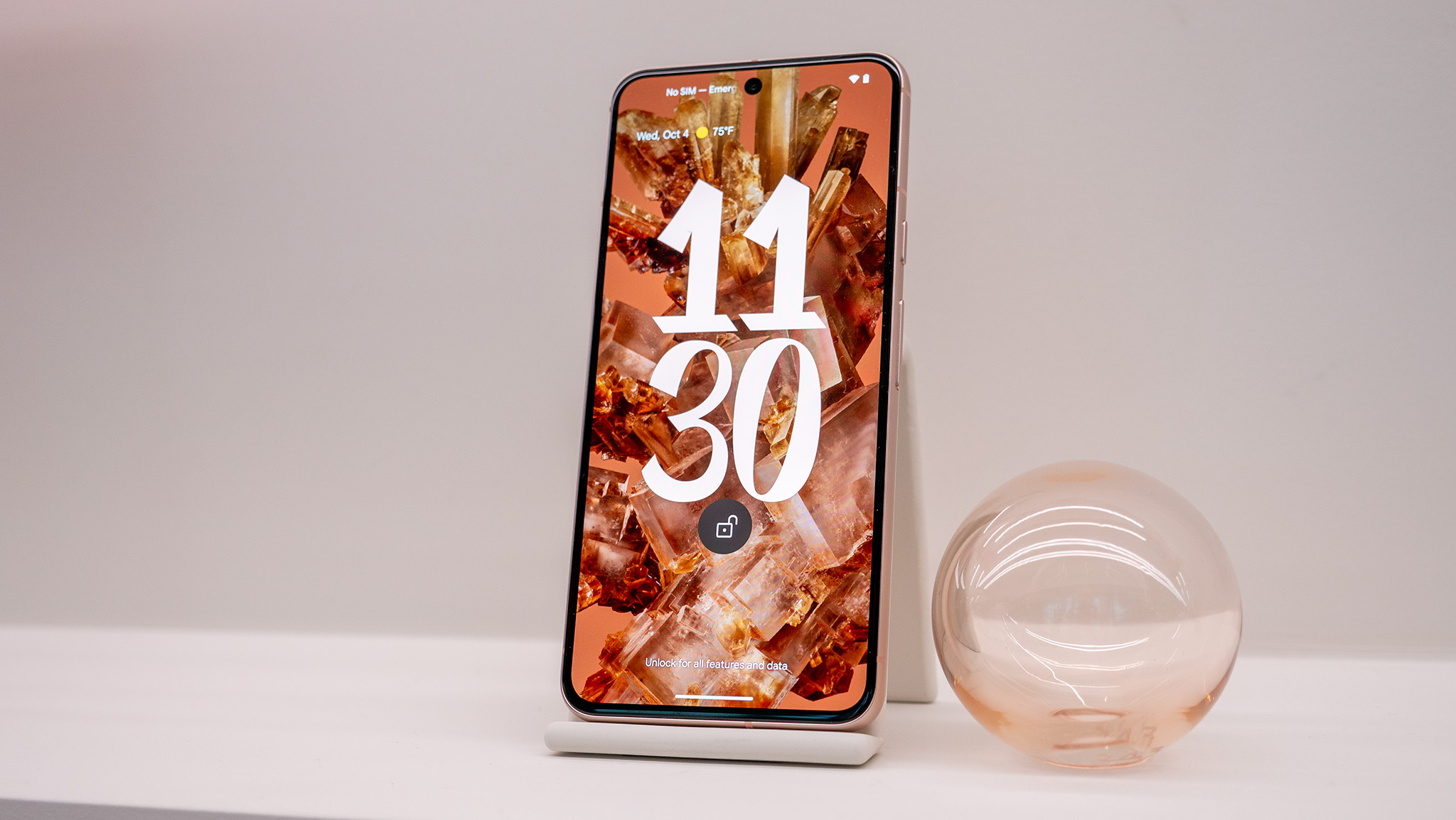
When it comes to specs, the Pixel 8 is a bit better equipped than the Pixel 7. The Tensor G3 chip sounds good enough, and Google claims it offers 10x better performance than the G2. However, Google's SoCs have often fallen behind Qualcomm's Snapdragon chipsets like the Snapdragon 8 Gen 2, which focus more on hardware performance than AI. That said, we're gonna have to test out the Pixel 8 before we can make our judgment.
| Header Cell - Column 0 | Google Pixel 8 | Samsung Galaxy S23 |
|---|---|---|
| Operating System | Android 14 | Android 13 (One UI 5.1) |
| Display | 6.2 inches, FHD+ (1080 x 2400), OLED, up to 120Hz, 1400 nits (HDR), 2000 nits (peak) | 6.1 inches, FHD+ (1080x2340), AMOLED, 120Hz refresh rate (48-120Hz), Up to 1,750 nits |
| Chipset | Tensor G3 | Snapdragon 8 Gen 2 for Galaxy |
| RAM | 8GB | 8GB |
| Storage | 128/256GB UFS 3.1 | 128/256GB UFS 3.1 |
| Battery & Charging | 4,575mAh | 3,900mAh, 25W wired, 15W wireless |
| Rear Camera 1 | 50MP, wide-angle, ƒ/1.68, 1.2μm, 82° | 50MP, wide-angle, ƒ/1.8, 1.0μm, 85˚ |
| Rear Camera 2 | 12MP, ultrawide, ƒ/2.2, 1.25μm, 125° | 12MP, ultrawide, ƒ/2.55, 1.4μm, 120° |
| Rear Camera 3 | ❌ | 10MP, telephoto, ƒ/2.4, 1.0μm, 3x zoom |
| Selfie Camera | 10.5MP, ƒ/2.2, 1.22μm, 80° | 12MP, ƒ/2.2, 1.22μm, 80° |
| Connectivity | 5G (sub-6, mmWave), Bluetooth 5.3, Wi-Fi 7 | 5G (sub-6, mmWave), Bluetooth 5.3, Wi-Fi 6E |
| Protection | IP68, Gorilla Glass Victus | IP68, Gorilla Glass Victus 2 |
| Dimensions | 70.8 x 150.5 x 8.9mm | 70.86 x 146.3 x 7.62mm |
| Weight | 187g | 168g |
| Colors | Obsidian, Snow, Lemongrass | Phantom White, Cream, Green, Lavender, other Samsung-exclusive colorways |
Meanwhile, both phones come with 8GB of RAM and up to 256GB of storage, as well as USB 3.2, Bluetooth 5.3, and IP68 water and dust resistance.
One notable upgrade for the Pixel 8 is the display. It's smaller than its predecessor, but it now has a 120Hz refresh rate, which is up from the 90Hz panel on the Pixel 7 and matches that of the S23. However, the Pixel scores over the Galaxy in display brightness, where it can hit up to 1400 nits in HDR and 2000 nits at peak brightness, compared to the S23's 1200 and 1750 nits, respectively.
Then there's battery life and charging. The Pixel features a 4,575mAh battery, which Google says can offer more than 24 hours of battery life. Of course, we'll have to test this out to be sure, but if the Tensor G3 chip is more efficient, then this claim could be accurate. The Galaxy S23 is a step up from the Galaxy S22, thanks to its larger 3,900mAh battery, which is admittedly smaller than the Pixel 8. Still, we were pleasantly surprised with battery life, which could easily get the phone through a full day of use.
Charging between the Pixel and Galaxy is roughly the same at 27W and 25W, respectively. Wireless charging tops out at 18W for the Pixel and 15W for the Galaxy.
Google Pixel 8 vs. Samsung Galaxy S23: Cameras

If you read our Galaxy S23 vs Google Pixel 7, then some of this may seem a bit familiar. As far as camera hardware goes, the Galaxy S23 wins simply because of the extra sensor. It features a 50MP primary, 12MP ultrawide, and 10MP 3x telephoto. This combination enables more versatility and up to 30x zooming.
The Pixel is at a bit of a disadvantage with just two rear cameras, a 50MP primary and a 12MP ultrawide. Because of this, zoom capabilities likely fall short of the Galaxy. Even so, Pixels are known for impressive digital zoom, thanks to Google's computational photography. That software prowess also gives the overall camera experience a boost, producing highly detailed images with plenty of depth.
Samsung is no slouch when it comes to camera output. Photos form the Galaxy S23 are good, although not necessarily the best or particularly eye-catching.
Of course, we can't really judge how the Pixel 8 will perform until we get one in for testing, so we'll update this section once we can properly try out the camera and push it to its limits.
Google Pixel 8 vs. Samsung Galaxy S23: Software
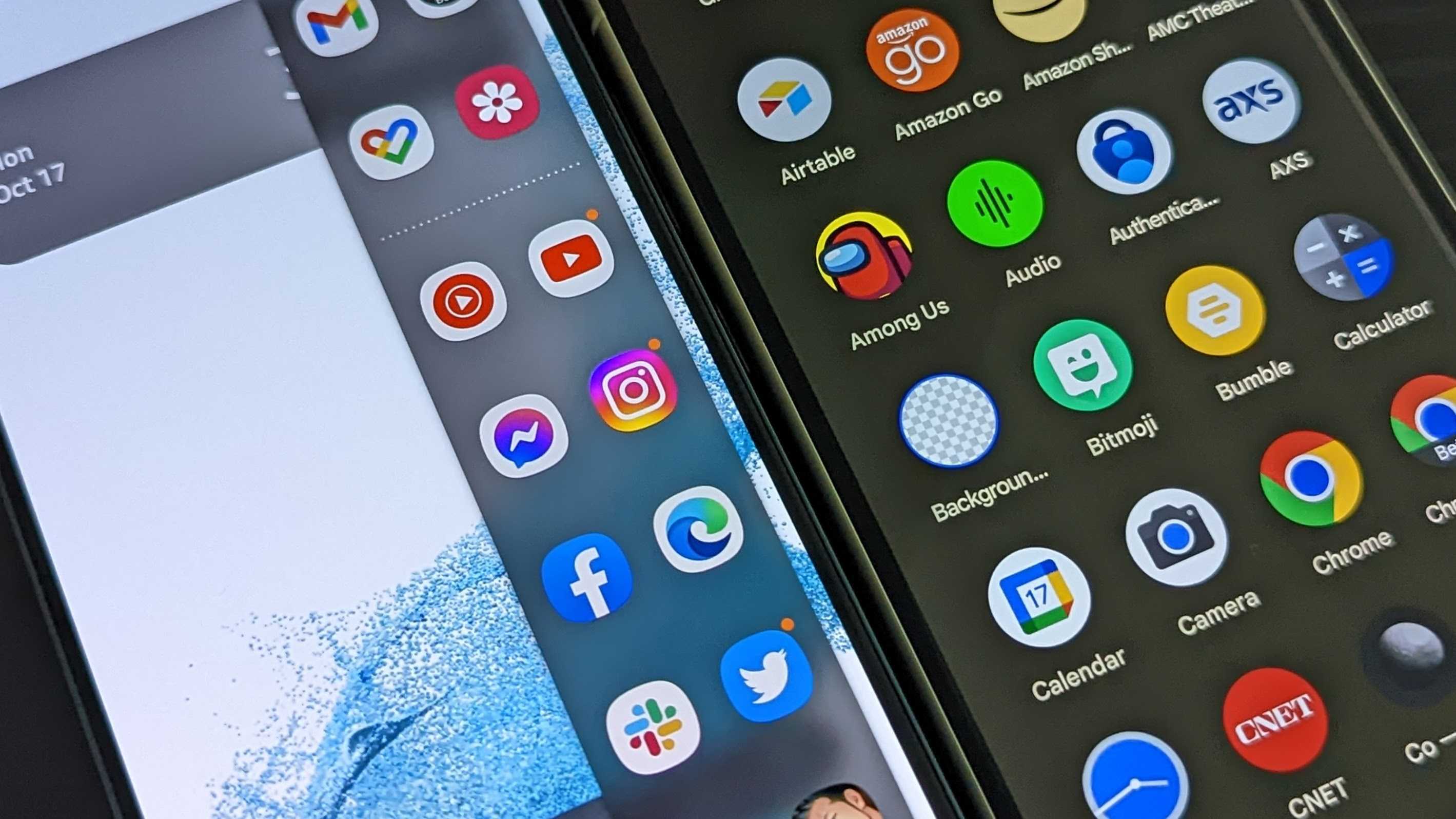
Both phones run Android, but the flavor is a bit different. Google goes for big, colorful buttons on the Pixel UI, and not much has changed with the latest Android 14 update. The Pixel 8 runs Android 14 out of the box, which is ahead of the Galaxy S23, which currently runs Android 13.
Samsung has already rolled out a beta for One UI 6, but Galaxy S23 users are still waiting for the stable launch.
That said, the Pixel isn't just ahead with the out-of-the-box software but also with software support. Google says it will provide seven years of support for platform updates, security patches, and feature drops. That's a good amount more than the five years of security patches and four OS upgrades you get on the Galaxy S23. And keep in mind the incoming Android 14 update will take up one of those software upgrades.
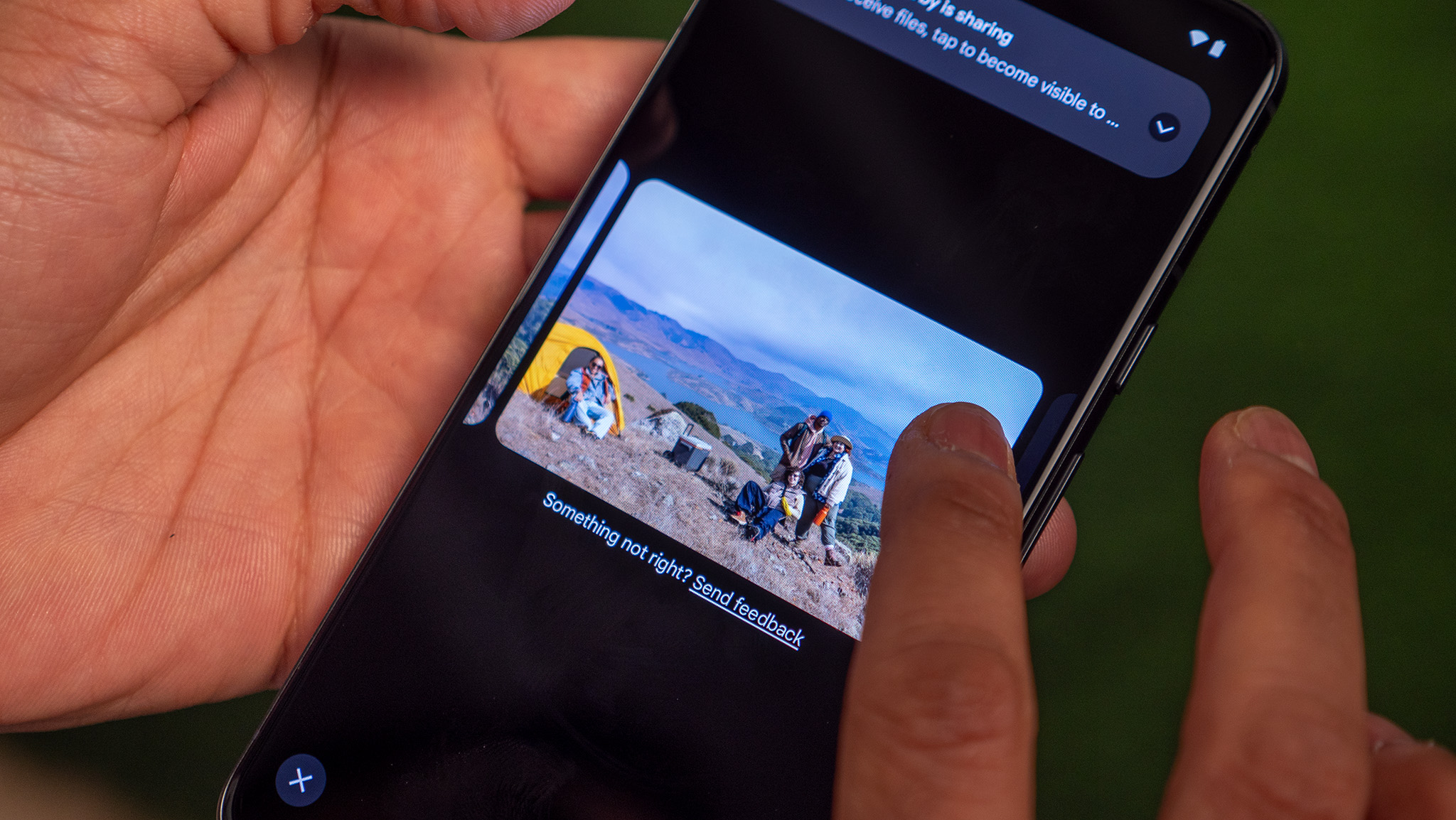

Samsung is no stranger to AI and incorporates it into aspects of the phone with Bixby and certain other features. The Gallery app, for example, has features like GIF remaster and Object Eraser, the latter of which is a feature akin to Google's Magic Eraser but with a duller name. It works pretty well, though, and I was even able to use it to help digitally remaster old family photos.
Then there's Google. AI is the name of the game here, and with the Pixel 8, there's even more AI to keep track of. Magic Editor, for example, makes it easy to rearrange the composition of people or objects in a photo. Magic Audio Eraser lets you adjust the volume levels of different audio sources in a video. That way, you can highlight the sounds that really matter. Then there's Best Take, which lets you swap the faces of people in your photo in case someone blinked or wasn't looking during the shot.
We plan to test out these features and more once we get a good amount of time with the Pixel 8.
Google Pixel 8 vs. Samsung Galaxy S23: Which should you buy?
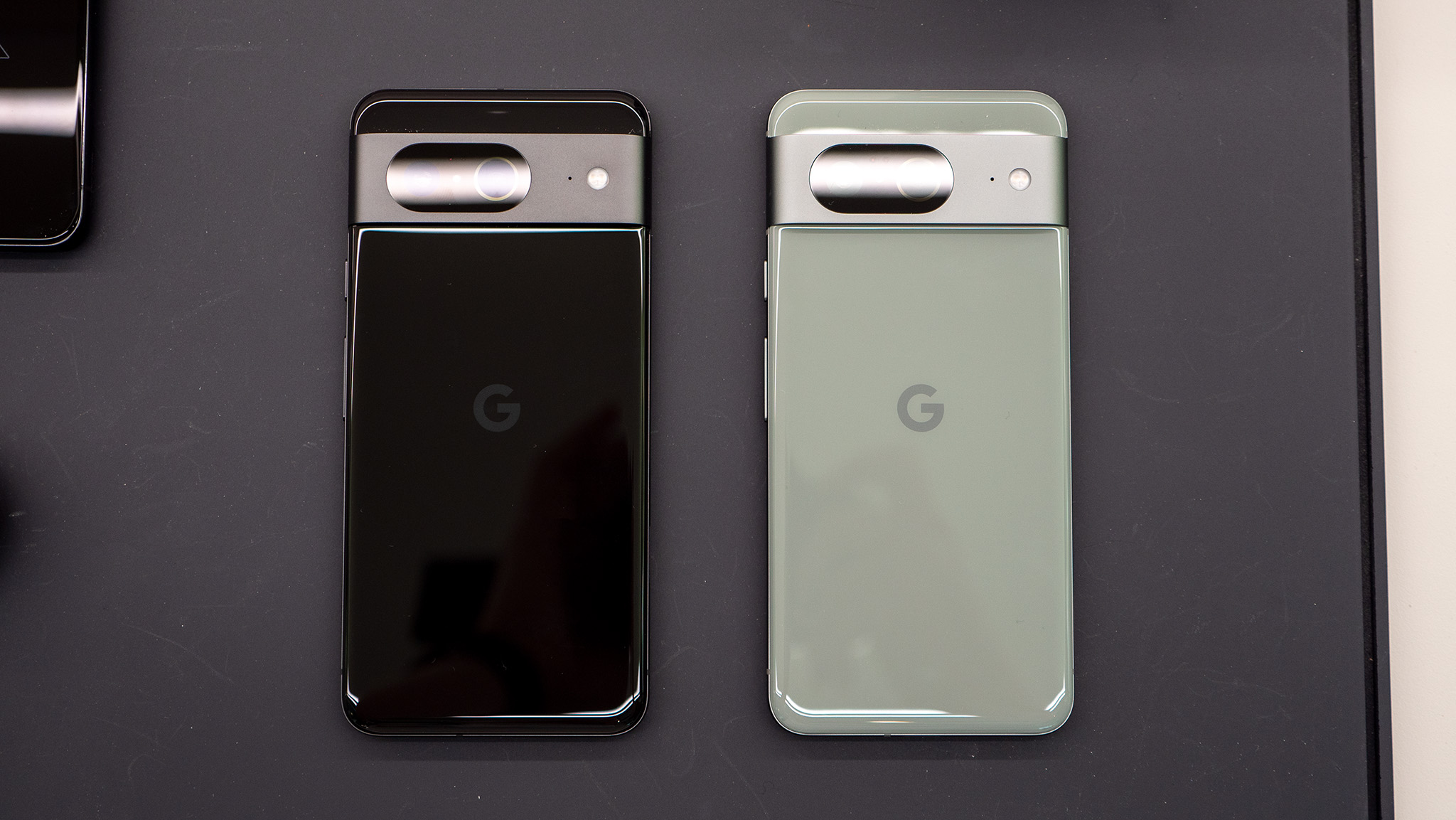
With the upgrades that Google has given to the Pixel 8, deciding between it and the Galaxy S23 is a much tougher choice. The S23 may have a more versatile camera setup, great battery life, and a more fully realized ecosystem with Samsung's other Galaxy products, but the Pixel 8 brings a lot to the table. The display is now on par with the best Android phones, the software support is the best in the business, and its fun AI features are hard to ignore.
For now, we can't say for sure which phone to go with until we test the Pixel 8 for ourselves, but so far, it's definitely leaning in Google's favor.

The new Google Pixel 8 seems to have just what it takes to be a significant threat to the other small flagships of 2023. The display finally gets a bump to 120Hz and the Tensor G3 chip sounds like quite the improvement over the previous model.

The Galaxy S23 is one of the most powerful small phones on the market in 2023, improving on just about everything when compared to its predecessor. The design may not be as striking as other phones, but looks can be deceiving.

Derrek is the managing editor of Android Central, helping to guide the site's editorial content and direction to reach and resonate with readers, old and new, who are just as passionate about tech as we are. He's been obsessed with mobile technology since he was 12, when he discovered the Nokia N90, and his love of flip phones and new form factors continues to this day. As a fitness enthusiast, he has always been curious about the intersection of tech and fitness. When he's not working, he's probably working out.
